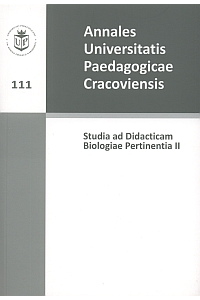Zrównoważony rozwój i bioróżnorodność w formalnym systemie kształcenia
Sustainable development and biodiversity in the formal system of education
Author(s): Alicja WalosikSubject(s): Social Sciences
Published by: Wydawnictwo Uniwersytetu Komisji Edukacji Narodowej w Krakowie
Summary/Abstract: Biodiversity includes all the richness of life on Earth - from genetic diversity to the diversityof species and ecosystems. Education for biodiversity is directly derived from biological andenvironmental education. In modern terms, it combines the natural social and economicaspects and relates directly or indirectly to all areas of human life, from health to culture.At the time when Earth’s biodiversity is being reduced at an alarming rate, the need to reachthe public consciousness with the knowledge of the consequences of that threat and to lookfor ways of counteraction became a global challenge.The presence of content related to the broad issues of biodiversity and sustainabledevelopment in the core curriculum of general education (2009) and the curricula ofbiology is one of the obligations under Article 13 of the Convention on Biological Diversity.Based on the analysis of documents devoted to the Decade of Education for SustainableDevelopment, a list of indicators has been prepared - key words, the presence of whichindicates the presence of the curriculum content in high school biology curriculum and theconcept of sustainable development.The conclusions of the analysis are to show if there is any change in the “Curricular basisfor general education” concerning nature and biological and ecological education, a changethat would offer new opportunities to implement the Sustainable Development idea in Polishschools. Environmental knowledge of students and local communities has increasingly beenrecognized as one of the foundations of sustainable development and the basis for properprotection of cultural and biological diversity.
Journal: Annales Universitatis Paedagogicae Cracoviensis. Studia ad Didacticam Biologiae Pertinentia
- Issue Year: II/2012
- Issue No: I
- Page Range: 127-141
- Page Count: 15
- Language: English

